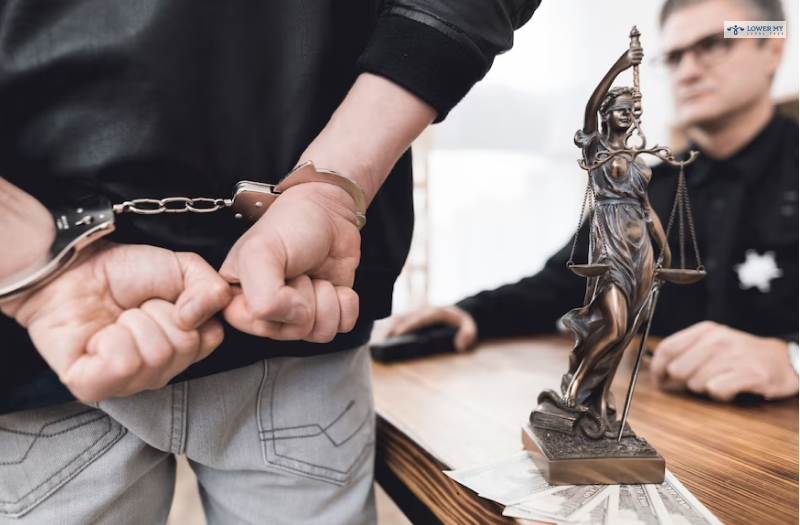It is possible that you have been exposed to only a fraction of the intricacies involved in the criminal justice process. However, it is important to understand that it is a much more elaborate and prolonged process than what you may have assumed. The focus of this piece is to delve into the criminal justice process as it pertains to the United States.
What Is Criminal Justice?
Criminal justice is a process involving a series of steps beginning with an investigation of a criminal activity and ending with the release of a convicted offender from the correctional institution. Rules and decision-making are at the center of this whole process.
Rules Of The Criminal Justice System In The US
Sources of the rules in the criminal justice process include the US Constitution and Bill of Rights, state constitutions, the US Code, state codes, court decisions, federal rules of criminal procedure, state rules of criminal procedure, and department and agency rules and regulations.
The federal rules of criminal procedure, for instance, govern the process in all criminal proceedings in the courts of the United States.
Discretion And Decision Making In Criminal Justice Process
Decision-making within criminal justice involves more than the learning of rules and the application of them within specific cases. Decisions are made based on discretion; that is, an individual exercises his or her judgment to make choices about alternative courses of action.
Discretion or decision-making without the presence of formal rules is not rare within the criminal justice process. Discretion comes into play whenever police tend to make a choice regarding whether to arrest, investigate, search, question, or use force.
Similarly, prosecutors exercise individual judgment in deciding whether to charge a person with a crime and whether to plea bargain. Judges also use discretion when setting bail, accepting or rejecting plea bargains, ruling on pretrial motions, and sentencing.
Parole board members tend to exercise discretion when deciding whether and when to release inmates from correctional facilities.
Steps In The Criminal Justice Process
The major steps that are included in the process of a criminal case are mentioned below:
Investigation
Investigation of a crime is conducted by the police. The purpose of a criminal investigation is to gather evidence for identification of a suspect and support an arrest. An investigation might require a search or an exploratory inspection of a person or a property.
Probable cause is the standard of proof that is required for a search. It’s exciting to learn that probable cause is based on facts that suggest evidence of criminal activity can be discovered in a certain location.
Arrest
The arrest of a suspect is conducted by the police. An arrest involves taking a person into custody for the purpose of holding the suspect until court. Probable cause is the legal requirement for an arrest. This means there is a reasonable link between a specific individual and a particular crime.
Prosecution
A district attorney conducts the prosecution of a criminal defendant. When determining whether to charge a person with a crime, prosecutors weigh many factors, including the seriousness of the offense and the strength of the evidence.
Indictment
When it comes to prosecuting crimes, there are two options for the prosecutor: an indictment by a grand jury or the filing of information. Capital offenses require an indictment according to the Federal Rules of Criminal Procedure. For other crimes that carry imprisonment as a punishment, the prosecutor has the choice of either an indictment or an information.
In some states and in the federal system, a grand jury is responsible for deciding whether or not to bring charges against a person. These proceedings are closed, and only the prosecutor presents evidence. Unfortunately, the defendant is not allowed to be present at these hearings nor are they entitled to a defense attorney. The standard for indicting someone for a crime is based on probable cause.
In the remaining states, a prosecutor files information as the charging document. A preliminary hearing is then held to determine whether or not there is enough evidence to warrant a trial. It is worth noting that at this hearing, the defendant and their legal counsel have the right to be present and dispute any charges.
Arraignment
The suspect is brought before a judge. The judge informs them of the charges against them and their rights.
A plea (guilty, not guilty, or no contest) is entered. If the defendant pleads not guilty, a date for the next court appearance is set.
Pretrial Proceedings
During this stage, there are different tasks that take place. These include sharing evidence between the prosecution and defense, making motions before the trial, and discussing plea bargains. Additionally, the court may determine bail or release conditions during this step.
Trial
If no plea agreement is reached, the case proceeds to trial. The prosecution and defense present their cases, call witnesses, and introduce evidence. In a criminal trial, the prosecution must prove the defendant’s guilt beyond a reasonable doubt.
Verdict
The judge or jury delivers a verdict of guilty or not guilty. If the verdict is guilty, a sentencing phase follows.
Sentencing
If the defendant is found guilty or pleads guilty, a separate sentencing hearing is held. The judge determines the appropriate punishment, which may include imprisonment, fines, probation, or community service.
Appeals
If either party believes there was a significant error in the trial process, they can appeal the verdict. Appeals can result in a new trial, a modified sentence, or other legal actions.
Probation
After sentencing, the defendant served their sentence in prison or on probation. In some cases, parole may be granted for early release under certain conditions.
Rehabilitation and Reentry
Rehabilitation programs may be offered to help individuals reintegrate into society after serving their sentences.
It’s important to note that this is a general outline, and the specific process can vary depending on the jurisdiction and the nature of the crime. Some cases may also involve diversion programs or alternative forms of dispute resolution, especially for minor offenses or first-time offenders.
What Is Due Process In Criminal Justice?
Due process is a requirement that a legal matter be resolved according to the established rules and principles and that individuals associated with a legal case are treated in a fair manner. Due process tends to apply both in criminal and civil cases.
In a developed nation like the US, individuals expect that the rights enshrined in their constitutions will be applied to them in a fair manner. This expectation of due process outlines the relationship individuals expect from their local, state, and federal governments. This is specifically regarding the rights of the individual shall not be violated.
What Step In The Adult Criminal Justice Process Determines Guilt Or Innocence?
Within the adult criminal justice process, the step that determines guilt or innocence within the individual is the trial. After many weeks or months of preparation, the prosecutor becomes ready for the most important part of his job, which is the trial.
The trial is a structured criminal justice process where the facts of a case are presented to a jury, and they decide if the defendant is guilty or not guilty of the charge offered.
During the trial, the prosecutor makes use of witnesses and evidence to prove to the jury that the defendant has committed the crime or crimes. Within a trial, the defendant is also represented by an attorney who tends to showcase the side of the defendant in the said case making use of witnesses and evidence.
In the trial, the judge, the impartial person in charge of the trial, decides what evidence can be displayed to the jury. A judge is very similar to a referee in a sport; they are not there to support a particular side but to make sure both parties are conducting the entire process in a fair manner.
Arraignment Before A Judge Is Necessary At What Stage Of The Criminal Justice Process?
An arraignment before a judge typically occurs at an early stage of the criminal justice process. It is one of the initial stages in the process, usually following the arrest and booking of a suspect. The purpose of the arraignment is to formally inform the defendant of the charges against them to allow them to enter a plea.
The process of arraignment tends to fit within the following processes:
- Investigation
This is where law enforcement gathers evidence and conducts their initial inquiry into a crime.
- Arrest
The suspect is apprehended by law enforcement, informed of their rights, and taken into custody.
- Booking
The suspect’s personal information is recorded, and they might be held in custody or released on bail.
- Arraignment
At this stage, the defendant is brought before a judge, informed of the charges against them, and asked to enter a plea. This is a critical step in the criminal justice process, as it formally initiates the court proceedings.
After the arraignment, if the defendant pleads not guilty, the case proceeds to pretrial proceedings, which may involve discovery, motions, and negotiations. If a plea agreement is not reached, the case eventually moves to trial. If a guilty verdict is returned at trial, a separate sentencing hearing is held. If the defendant pleads guilty, the sentencing phase may follow immediately after the plea is entered.
So, arraignment is a necessary and early step in the criminal justice process, ensuring that the defendant understands the charges against them and has the opportunity to enter a plea.
Frequently Asked Questions (FAQs) On The Criminal Justice Process
These are the frequently asked questions related to the criminal justice process in the US mentioned below:
The criminal justice process is a series of stages that a criminal case goes through, from investigation and arrest to trial and sentencing. It is designed to ensure fairness, protect the rights of the accused, and determine guilt or innocence.
During the investigation stage, law enforcement gathers evidence, interviews witnesses, and identifies suspects. They may obtain search and arrest warrants as needed.
An arraignment is a court hearing where the defendant is informed of the charges against them and asked to enter a plea (guilty, not guilty, or no contest). It typically occurs shortly after the arrest and booking of the suspect.
A guilty plea means the defendant admits to the charges and accepts responsibility for the crime. A not guilty plea means the defendant denies the charges and requires the prosecution to prove their guilt in court.
If you plead not guilty, the case proceeds to pretrial proceedings, where evidence is exchanged, motions are filed, and negotiations for a plea bargain may occur. If no agreement is reached, the case goes to trial.






